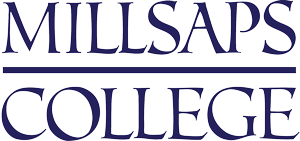Abed Haddad spends his days working with treasured works of art in the collection of the Museum of Modern Art (MoMA) in New York City.
Haddad, a 2014 graduate of Millsaps, is The David Booth Fellow in Conservation Science at MoMA. He officially began his fellowship in September 2019, and works closely with conservators identifying and studying materials used in art making, devising strategies for environmental control and monitoring of art, and supporting the transport and hanging of art. After spending the last two years as a visiting scholar at MoMA studying the pigments used by Henri Matisse in the execution of Jazz, Haddad is now beginning a new study of the works of Hans Bellmer in the collection, in particular drawings on paper, painted sculptures, and hand tinted photographs.
Certainly, this would be fascinating work for anyone who studied art in college. For Haddad, he’s building on the minor he earned in art history. He actually majored in chemistry, and in 2019, earned his Ph.D. in chemistry at The Graduate Center of the City University of New York.
This blending of science and art is the culmination of Haddad’s experience at Millsaps.
“I was really attracted to the idea of a liberal arts education, where I would be exposed to many things outside of my major, knowing that I was interested in both the sciences and the humanities,” said Haddad. “I didn’t know I would fall in love with art and art making the way I did, and as a result I was able to merge my passions into the career I ended up pursuing.”
Haddad credits the Heritage program and several faculty members for guiding his education and, ultimately, his career.
“Heritage was an absolutely phenomenal experience for me,” he said. “I learned so much in that year that I have never forgotten. It led me towards minoring in art history and taking studio art classes, and immersing myself in the type of education Millsaps offered.
“Dr. Steven Smith, my Heritage discussion leader, instilled in me the skills needed for a real discussion on any topic, and I was able to carry that into my science education,” Haddad said. “Working alongside Dr. Kristy Stensaas, my longtime mentor at Millsaps, was also a huge treat. She helped shape me into a scientist who knows how to ask research questions, and educator who knows how to convey his point clearly Dr. Stensaas was also my Ford Fellowship mentor, where she encouraged me to lecture on and share my interest in conservation science with my students. Dr. Wolfgang Kramer helped develop my senses for probing questions concerning research through his lecturing style and his open ended exams, as challenging as they might have been. Finally, and importantly, Dr. Elise Smith—she believed in me and my interdisciplinary approach and championed my desire for the career in which I ended up. She never questioned the fact that being a chemistry major meant any less dedication to art history and museum studies.”
Haddad’s fellowship with MoMA runs through August 2021. Looking ahead, he hopes to continue working with art objects and studying their materials. For now, however, his focus is on using the skills he learned in the labs and studios at Millsaps.
“I love getting to interact with a great team of scientists, conservators, and curators,” he said. “And I’m lucky that I get to study some of the greatest works of modern art in the world.”
